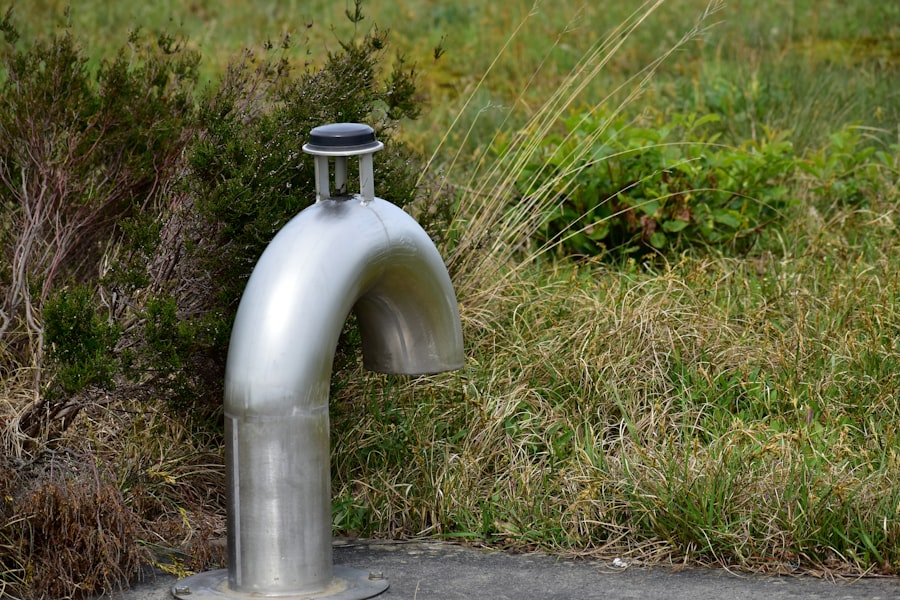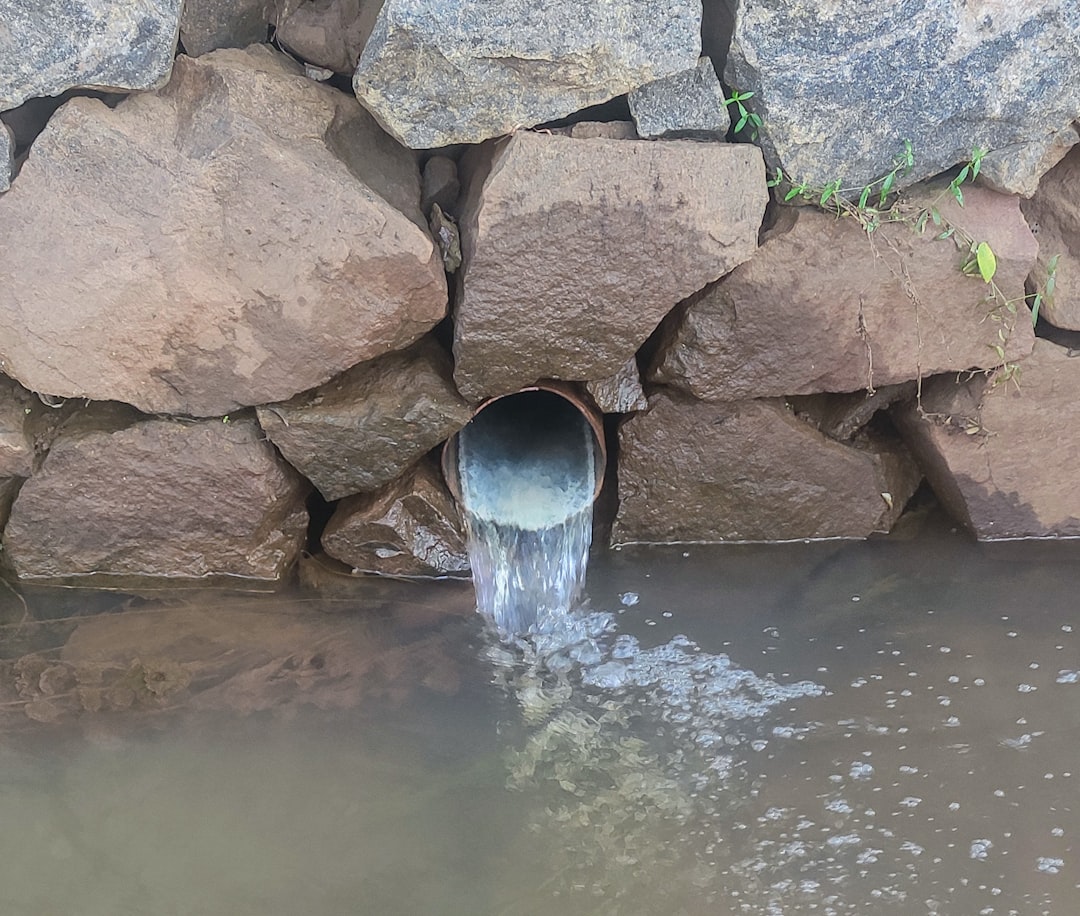A Water System Improvement Fee is a charge levied by water utilities to fund necessary upgrades and enhancements to the water supply infrastructure. This fee is typically assessed on consumers’ water bills and is designed to ensure that the water system can meet current and future demands.
They are often implemented in response to aging infrastructure, increased demand for water services, or regulatory requirements aimed at improving water quality. Understanding this fee is crucial for you as a consumer, as it directly impacts your monthly budget and the overall quality of the water you receive. Check out this video on how investors making money from water.
Key Takeaways
- A Water System Improvement Fee is a charge imposed by water utilities to fund infrastructure upgrades and maintenance.
- The purpose of Water System Improvement Fees is to ensure the reliability and safety of the water system for consumers.
- Water System Improvement Fees are typically calculated based on factors such as water usage, property size, and infrastructure needs.
- Consumers may experience increased water bills due to Water System Improvement Fees, but they contribute to long-term infrastructure sustainability.
- Water System Improvement Fees play a crucial role in maintaining and upgrading water infrastructure to ensure water quality and public health.
The Purpose of Water System Improvement Fees
The primary purpose of Water System Improvement Fees is to generate revenue for essential upgrades and maintenance of water infrastructure. As you may be aware, many water systems across the country are facing challenges due to aging pipes, outdated treatment facilities, and increased demand from growing populations. These fees help ensure that utilities can invest in necessary improvements, such as replacing old pipes, upgrading treatment plants, and expanding capacity to meet future needs.
Moreover, these fees play a vital role in ensuring compliance with federal and state regulations regarding water quality and safety. By funding improvements, utilities can better adhere to standards set by agencies like the Environmental Protection Agency (EPA). This not only protects public health but also enhances the overall reliability of the water supply.
As a consumer, knowing that your fees contribute to these critical improvements can provide peace of mind regarding the safety and quality of your drinking water.
How Water System Improvement Fees are Calculated

Calculating Water System Improvement Fees involves a complex process that takes into account various factors, including the age and condition of existing infrastructure, projected growth in demand, and specific regulatory requirements. Utilities typically conduct assessments to determine the necessary improvements and their associated costs. This information is then used to establish a fee structure that reflects the financial needs of the water system.
As a consumer, you may wonder how these calculations affect your individual bill. Generally, fees can be based on factors such as your water usage, property size, or even flat rates applied uniformly across all customers. Understanding how these fees are determined can help you better anticipate changes in your monthly expenses and encourage you to adopt water-saving practices that may mitigate costs.
Understanding the Impact of Water System Improvement Fees on Consumers
| Water System Improvement Fee Impact | Metrics |
|---|---|
| Consumer Affordability | Percentage of income spent on water system improvement fees |
| Consumer Satisfaction | Survey results on consumer satisfaction with water system improvement fees |
| Utility Revenue | Total revenue generated from water system improvement fees |
| Infrastructure Investment | Amount of funds allocated to water system improvements |
Water System Improvement Fees can have a significant impact on consumers’ monthly budgets. As these fees are added to your water bill, they can lead to an increase in overall costs for households and businesses alike. This financial burden can be particularly challenging for low-income families or individuals on fixed incomes who may already struggle to afford basic utilities.
However, it’s essential to recognize that these fees are not merely an additional expense; they represent an investment in the future of your community’s water supply. By funding necessary improvements, these fees help ensure that you have access to safe, reliable drinking water. In this sense, while you may feel the pinch of higher bills in the short term, the long-term benefits of improved infrastructure and water quality can outweigh these costs.
The Role of Water System Improvement Fees in Infrastructure Maintenance
Water System Improvement Fees play a crucial role in maintaining and upgrading aging infrastructure. Many municipalities face significant challenges due to outdated pipes and treatment facilities that require constant repairs and replacements. By collecting these fees, utilities can allocate funds specifically for infrastructure projects that enhance the overall efficiency and reliability of the water system.
As a consumer, you may not always see the direct results of these improvements immediately. However, over time, you will likely notice fewer service interruptions, improved water pressure, and enhanced water quality. These benefits stem from the proactive measures funded by Water System Improvement Fees, which ultimately contribute to a more resilient and sustainable water supply for your community.
The Legal and Regulatory Framework Surrounding Water System Improvement Fees

The implementation of Water System Improvement Fees is governed by a complex legal and regulatory framework that varies by state and locality. Utilities must comply with various laws and regulations when establishing these fees, ensuring that they are fair, transparent, and justifiable. This framework often includes public hearings and opportunities for consumer input before fees are finalized.
As a consumer, it’s important to be aware of this regulatory landscape. Understanding your rights regarding fee assessments can empower you to engage with local utility providers effectively. You may have opportunities to voice your concerns or support for proposed fee changes during public meetings or through written comments submitted to regulatory agencies.
Transparency and Accountability in the Collection and Allocation of Water System Improvement Fees
Transparency and accountability are essential components of effective management when it comes to Water System Improvement Fees. Consumers deserve to know how their fees are being collected and allocated. Utilities should provide clear information about how funds are being used for infrastructure projects and improvements.
As a consumer, you can advocate for greater transparency by requesting detailed reports from your local utility regarding fee expenditures. Many utilities now offer online platforms where you can access this information easily. By staying informed about how your fees contribute to infrastructure improvements, you can hold utilities accountable for their spending practices and ensure that funds are being used effectively.
The Relationship Between Water System Improvement Fees and Water Quality
There is a direct relationship between Water System Improvement Fees and water quality. When utilities invest in infrastructure improvements funded by these fees, they enhance their ability to provide safe drinking water that meets or exceeds regulatory standards. Upgrades such as modern treatment facilities or advanced filtration systems can significantly improve the quality of the water supplied to consumers.
As a consumer, understanding this connection can help you appreciate the importance of these fees beyond their immediate financial impact. Knowing that your contributions are directly tied to improvements in water quality can foster a sense of community responsibility and encourage you to support initiatives aimed at enhancing local water systems.
The Importance of Public Input and Participation in Water System Improvement Fee Decision-Making
Public input is vital in shaping how Water System Improvement Fees are implemented and managed. Engaging consumers in decision-making processes ensures that their voices are heard regarding how funds are allocated and what projects are prioritized. Many utilities hold public meetings or forums where consumers can express their opinions or concerns about proposed fee changes or infrastructure projects.
As a consumer, participating in these discussions is crucial for ensuring that your needs and preferences are considered. By attending public meetings or providing feedback through surveys or comment periods, you can influence decisions that affect your community’s water supply. Your involvement not only helps shape local policies but also fosters a sense of ownership over shared resources.
Alternative Funding Mechanisms for Water System Improvements
While Water System Improvement Fees are a common funding mechanism for infrastructure projects, there are alternative options available that utilities may consider. These alternatives include grants from federal or state agencies, low-interest loans, public-private partnerships, or even community fundraising initiatives. Each funding source has its advantages and challenges, which can impact how quickly projects are completed.
As a consumer, being aware of these alternatives can help you understand the broader context of funding for water system improvements. Advocating for diverse funding sources can lead to more sustainable solutions that reduce reliance on fees alone. By supporting initiatives that explore alternative funding mechanisms, you contribute to a more resilient financial framework for your community’s water system.
The Future of Water System Improvement Fees: Challenges and Opportunities
The future of Water System Improvement Fees presents both challenges and opportunities as communities grapple with aging infrastructure, climate change impacts, and evolving regulatory requirements. As demand for clean water continues to grow, utilities must find innovative ways to fund necessary improvements while balancing affordability for consumers. As a consumer, staying informed about these challenges can empower you to advocate for sustainable solutions within your community.
Engaging with local policymakers and utility providers about potential reforms or new funding strategies can help shape a more resilient future for your water system. By participating in discussions about the future of these fees, you play an active role in ensuring that your community has access to safe and reliable drinking water for generations to come.
For those interested in understanding the intricacies of water system improvement fees, a related article that provides valuable insights can be found at this link. This article delves into the various aspects of water system financing and the implications for local communities, making it a useful resource for anyone looking to grasp the broader context of water infrastructure funding.
WATCH THIS! Why Wall Street Is Exploding Your Water Bill
FAQs
What is a water system improvement fee?
A water system improvement fee is a charge imposed by a water utility company to fund the improvement and maintenance of the water system infrastructure.
Why do water utility companies impose a water system improvement fee?
Water utility companies impose a water system improvement fee to ensure that there are funds available for the ongoing maintenance, repair, and improvement of the water system infrastructure. This fee helps to ensure the reliability and safety of the water supply.
How is the water system improvement fee calculated?
The water system improvement fee is typically calculated based on the size of the water meter or the amount of water used by the customer. The fee may be a fixed amount or a percentage of the customer’s water bill.
Is the water system improvement fee the same as the water usage fee?
No, the water system improvement fee is separate from the water usage fee. The water system improvement fee is specifically designated for the improvement and maintenance of the water system infrastructure, while the water usage fee is based on the amount of water used by the customer.
Can customers opt out of paying the water system improvement fee?
In most cases, customers cannot opt out of paying the water system improvement fee. It is a mandatory charge imposed by the water utility company to ensure the ongoing maintenance and improvement of the water system infrastructure.
How are the funds from the water system improvement fee used?
The funds collected from the water system improvement fee are used to finance projects such as repairing aging pipelines, upgrading treatment facilities, improving water quality, and expanding the water system infrastructure to meet growing demand.
